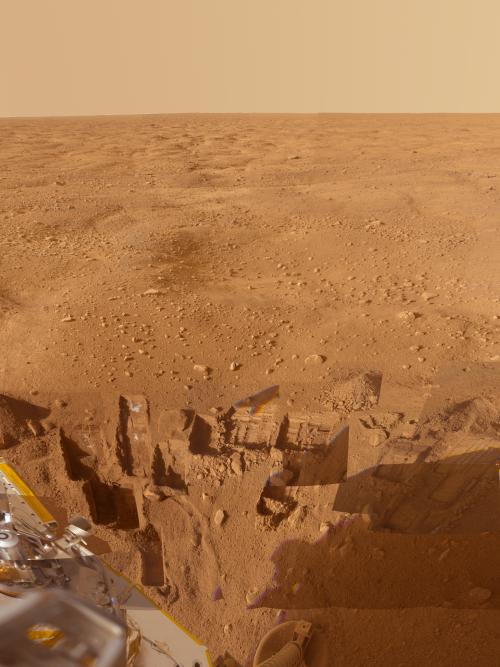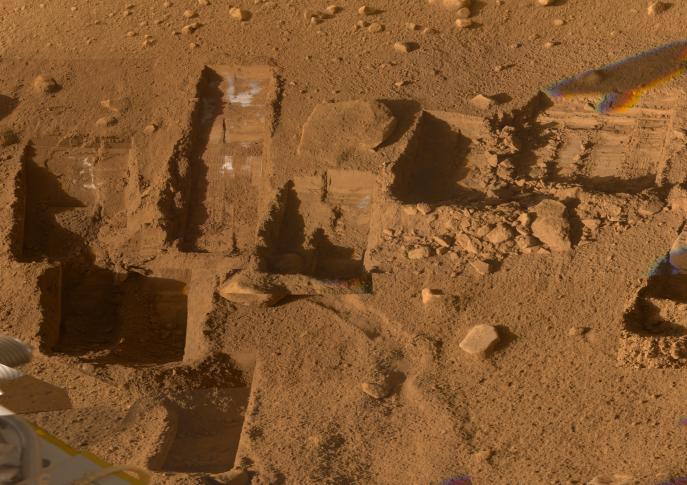J
JonClarke
Guest
<p><span style="font-size:10pt;font-family:Arial">The latest (December 11) issue of Nature has news feature item that gives an interesting behind the scenes look into the Phoenix mission.<span> </span>I found the following of particular interest.</span><span style="font-size:10pt;font-family:Arial"> </span></p><p><span style="font-size:10pt;font-family:Arial">Uniquely challenging aspects – Phoenix was carrying out the most complex experiments since Viking.<span> </span>Unlike Viking and the MERs Phoenix was also working against the clock, the certain knowledge that the mission would terminate before the end of the year.<span> </span>This produced management and operational stresses not encountered before.<span> </span>Phoenix was a high risk mission, run at a very low cost.</span><span style="font-size:10pt;font-family:Arial"> </span></p><p><span style="font-size:10pt;font-family:Arial">Technical problems – The cause for the problematic TEG oven doors was a post MPL modification.<span> </span>This consisted of a thin retractable cover to protect against terrestrial contamination.<span> </span>This turned out to be slightly too large during tests, and a revised design was sent to the manufacturer (Honeybee Robotics).<span> </span>For some reason the new covers were made to the old design, not the new one, and this was not discovered until the lander was on Mars.</span><span style="font-size:10pt;font-family:Arial"> </span></p><p><span style="font-size:10pt;font-family:Arial">NASA interference – Small missions like Phoenix are run out of the PI’s institution, in this case the Uibersity of Arizona, not by NASA.<span> </span>But because this was high profile, NASA administration kept a very close eye on proceedings.<span> </span>The difficulties witrh TEGA were particularly concerning and at the end of June the NASA Mars Exploration program head (Doug McCuistion) stepped in and ordered the Phoenix tam to treat the last TEGA sample as the last and to drop all other efforts to get the elusive ice sample.<span> </span>This overriding of their autonomy caused some resentment.<span> </span>In the end it wasted three weeks, as the attempt to get pure ice in was frustrated not only by the baulky doors but the sticky soil.<span> </span>After three weeks McCuistion relented and let the team get on with the program in their own way, but still three irreplaceable weeks had been lost.</span><span style="font-size:10pt;font-family:Arial"> </span></p><p><span style="font-size:10pt;font-family:Arial">Bang for the buck – despite these problems Phoenix offered tremendous bang for the buck.<span> </span>It tested five samples in TEGA (two more than mission success) and three in MECA WCL (mission success.<span> </span>It imaged particles 1/100 the size of the previous smallest seen.<span> </span>More than 25,000 images were collected.<span> </span>Despite this, the loss of one MEC WCL and three TEGA samples are still mourned, and there are concerns that follow up studies on the data may not be adequately funded.</span><span style="font-size:10pt;font-family:Arial"> </span></p><p><span style="font-size:10pt;font-family:Arial">Sticky soil – this was completely unexpected.<span> </span>None of the previous five sites had sticky soil, at most slightly clumpy. However the stickiness was probably due to the present of perchlorate brine films.<span> </span>Perchlorate is highly hydroscopic and depresses the meting point to -70 degrees. <span> </span>It is present in quantities of up to a few percent in all WCL samples.</span><span style="font-size:10pt;font-family:Arial"> </span></p><p><span style="font-size:10pt;font-family:Arial">“Barnacles” – one team member (Nilton Renno at University of Michigan) believes that these features on the lander legs were splashes of salty mud kicked up by the retrorockets.<span> </span>He also believes they grew, merged and moved over time, acting like brine droplets.<span> </span>This was because the legs were 20 degrees warmer than the surface (as warm as -10), with the perchlorate this would long enough for water to remain liquid (note that brines have lower favour pressures as well, and can persists longer than pure water).<span> </span>This is hotly debated in the team, a paper will be submitted to JGR, and while some team members are coauthors, some are most emphatically not.</span><span style="font-size:10pt;font-family:Arial"> </span></p><p><span style="font-size:10pt;font-family:Arial">Low temperature CO2 signal – all TEGA samples showed a low temperature CO2 release.<span> </span>The nature of this is not yet known.<span> </span>It could be a low temperature carbonate breaking down – or it could be organics.</span></p> <div class="Discussion_UserSignature"> <p><em>Whether we become a multi-planet species with unlimited horizons, or are forever confined to Earth will be decided in the twenty-first century amid the vast plains, rugged canyons and lofty mountains of Mars</em> Arthur Clarke</p> </div>




